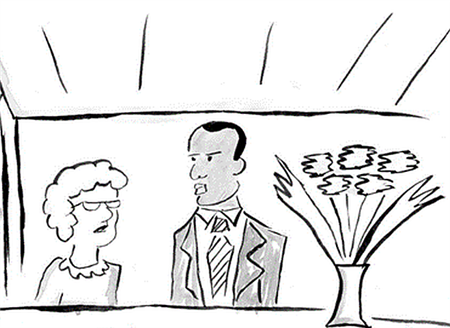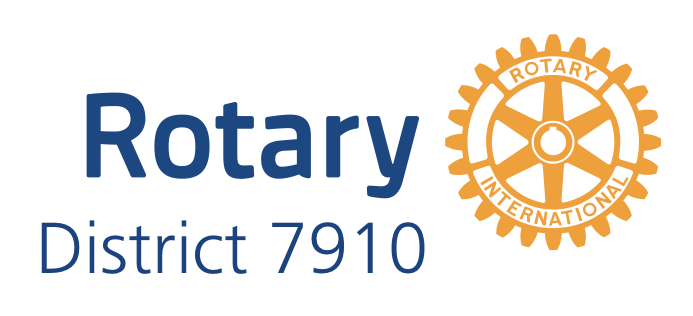
As Rotarians, do we consider accessibility as much as we should? Out of the mouths of babes: As a brand-new Rotarian, inducted only a few months ago, I am aware that I am pushing my luck, and cannot possibly know the answer to this question. However, as an experienced, blind disability-inclusion consultant, I feel more comfortable in asking the question, and inspired to know the answer - and to raise the flag for this cause.
 I am aware that many of you reading this article might raise your own hand and ask, "What on Earth is he waffling on about, and what exactly is accessibility?" It’s a fair question, and one that I have heard way more times than I care to count.
I am aware that many of you reading this article might raise your own hand and ask, "What on Earth is he waffling on about, and what exactly is accessibility?" It’s a fair question, and one that I have heard way more times than I care to count.In this essay, I will try unpacking some key points about this often totally overlooked human-rights concept.
I will illustrate, literally, how we too often miss the point of accessibility’s very existence. I will highlight other avenues germane to access, other than the stereotypic wheelchair consideration. Lastly, I will ask the question again, in the context of Rotary International’s guiding principle: the Four-Way Test.
For those who might struggle to see the cartoon, at right: Two people are pictured speaking inside an hotel. The hotel manager says to an official: “Why should we make our hotel accessible? We never have disabled guests staying with us.”
So, what is access?
Question: Is it all about wheelchair users, and providing ramps into buildings?
Answer: I am afraid not. It is way broader than that. Access is the practical consideration towards not only persons with many varieties of disabilities but also to many more people who could benefit from better, more considerate access. The term universal access describes it best.
Question: So who else benefits from good access, and what is universal access?
Answer: Access consideration has gained much traction over the last couple of decades, and universal access is now recognized as the preferred baseline to work around.
Basically, everyone - not just people with disabilities - benefits from universal access and its corresponding science, inclusive design:
- Universal access is the outcome where everyone using the facility can do so equitably, without having to worry about inappropriate and avoidable barriers.
- Inclusive design imagines this outcome as a matter of course, in the same way that it would be inconceivable to design a facility without a fire exit or bathroom.
To illustrate this in another way, consider how many countries’ urban public-transport infrastructure look at the matter.
They estimate that at least 30 to 40 percent of the market share of travelers will be “special needs.” They include:
- People with all kinds of disabilities.
- The aged.
- Parents with small children, including those using PRAMS (pregnancy risk-assessment monitoring systems).
- People carrying ungainly objects, such as luggage.
- Pregnant women.
- Children.
- And, people with temporary disabilities, such as broken limbs or those who use crutches, etc.
Viewed in this way, this puts a different spin on answering anticipated questions such as: “Is it
necessary to address accessibility? Isn’t it only for people with disabilities?”
This brings us to the age-old issue of affordability, and other practical questions.
Question: Will I be able to afford to make my facility accessible?
Answer: The answer is more nuanced than one might think.
Firstly, access, in many countries in the world, has been enshrined in building regulations for decades. Unfortunately, building and design professionals had chosen all too often not to consult the relevant sections of the building code. Had they done so, they would have provided world-class guidance on producing accessible facilities. The fact is that if one builds access into a project at design level, it will cost very little, if anything - as opposed to retrofitting existing structures, which you can guarantee will cost far more.
Question: What sort of things might we think about when considering access, if not just ramps?
Answer: Here are a few, at the risk of over simplifying:
- Gradients, lengths and surfaces of ramps.
- Door widths.
- Vertical access, stairs and lifts.
- Lift accessibility for visually impaired users - e.g. voice enunciation, tactile symbols on the controls.
- Marking the edges of steps in a contrasting and tactile strip.
- Handrails for stairs with appropriate diameter, to be grasped.
- Accessible bathroom configuration.
- Lighting.
 To close this section, consider this sobering thought. Since access has been legitimized globally in such forums as the United Nations Convention on the Rights of Persons with Disabilities, how morally and legally defensible is it to either ignore or fudge the issue?
To close this section, consider this sobering thought. Since access has been legitimized globally in such forums as the United Nations Convention on the Rights of Persons with Disabilities, how morally and legally defensible is it to either ignore or fudge the issue?Question: Other than the built infrastructure, what else could benefit from better access?
Answer: Firstly, one of the most invisible and overlooked aspects of access is the over-reliance on paper media and the absence of a digital alternative. The second is that of digital access, which is too often rendered inaccessible by careless web and app development. In addition, presenting and presentations need to consider accessibility far more than they do.
Once again, there are global-access protocols such as W3 (World Wide Web) Consortium. They provide ample guidance on ensuring that digital interfaces are accessible to blind and visually impaired people.
Lastly, and most importantly, is attitudinal accessibility. The proliferation of barriers equates to inaccessibility, which equates to exclusion.
Barriers, with very few exceptions don’t create themselves. They are created by people.
Finally, as Rotarians, we are proud of measuring up to the Four-Way Test. Let’s apply this test to access as well to the things we think, say and do:
- Is it the truth? Are we sure that when access is assured that it is the truth?
- Is it fair to all concerned? Can it be fair to all when inaccessibility excludes some?
- Will it build goodwill and better friendships? How sad it is when goodwill and friendship cannot reach those so often overlooked by inaccessibility.
- Will it be beneficial to all concerned? Let’s ensure that all concerned can benefit, and that none are excluded due to inaccessibility.
For more information, contact Jeremy Opperman, a member of both the Rotary Club of Newlands, in South Africa, and our district's Diverse Abilities United Committee, at jeremy@disabilitydesk.co.za
Note: The DAU Committee meets each Monday at 8:30 a.m. via Zoom. For more information, contact committee member Ken Masson, a member of the Rotary Club of Merrimack Valley, at kennethmasson@gmail.com
